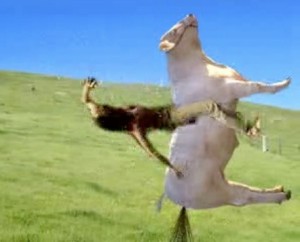Fencing or buffer strips to keep cattle out of streams shouldn’t be a first move, University of California-Davis rangeland watershed specialist Kenneth Tate said during a livestock water quality seminar Oct. 22 in Fairfield, Wash.
 Best management practices include maintaining healthy cattle or placing salt away from streams to avoid contamination, he said.
Best management practices include maintaining healthy cattle or placing salt away from streams to avoid contamination, he said.
“The absolute last place I would recommend a start is to consider fencing off creeks, because first and foremost, we don’t know that it’s required,” he said. “Start with the cheap stuff, the easy stuff, and build your way into it, just as you would with any business going into a new venture.”
Best management practices need to make economic sense to ranchers, Tate said.
“There’s a lot of things to think about before you start erecting hundreds of miles of fence,” he said.
More than 90 percent of microbes in a pile of manure, or range cow fecal pat, never leave, Tate said. Depending on temperature or environmental conditions, they die very quickly. It removes a lot of the potential microbial pollutants, he said.
Most microbes are trapped roughly a yard around the pat. Microbes reduce by 70 to 90 percent for every additional yard they travel, such as in runoff during a storm.
The first step is deciding whether a buffer zone is needed, and how efficiently a location traps pollutants, Tate said.
“It really comes down to site-specific conditions and the magnitude of the risk,” he said. “It’s not a one-size-all answer. Anybody who tells you (it) is is oversimplifying our extremely complex world.”
